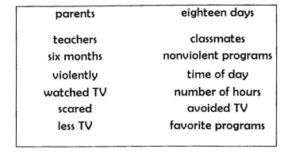This will test your knowledge of the IELTS Reading skills and know where you need to improve using the same style of exam/test you are going to encounter.
If you have not taken our IELTS course, you can do so here to refresh your memory.
READING PASSAGE 1
You should spend about 20 minutes on Questions 1-14, which are based on Reading Passage 1 below.
The Value of a College Degree
The escalating cost of higher education is causing many to question the value of continuing education beyond high school. Many wonder whether the high cost of tuition, the opportunity cost of choosing college over full-time employment, and the accumulation of thousands of dollars of debt is, in the long run, worth the investment. The risk is especially large for low- income families who have a difficult time making ends meet without the additional burden of college tuition and fees. In order to determine whether higher education is worth the investment, it is useful to examine what is known about the value of higher education and the rates of return on investment to both the individual and to society.
THE ECONOMIC VALUE OF HIGHER EDUCATION
There is considerable support for the notion that the rate of return on investment in higher education is high enough to warrant the financial burden associated with pursuing a college degree. Though the earnings differential between college and high school graduates varies over time, college graduates, on average, earn more than high school graduates. According to the Census Bureau, over an adult’s working life, high school graduates earn an average of $1.2 million; associate’s degree holders earn about $1.6 million; and bachelor’s degree holders earn about $2.1 million (Day and Newburger, 2002). These sizeable differences in lifetime earnings put the costs of college study in realistic perspective. Most students today—about 80 percent of all students—enroll either in public four- year colleges or in public two-year colleges. According to the U.S. Department of Education report, Think College Early, a full-time student at a public four-year college pays an average of $8,655 for in-state tuition, room, and board (U.S. Department of Education, 2002). A fulltime student in a public two-year college pays an average of $1,359 per year in tuition (U.S. Department of Education, 2002). These statistics support the contention that, though the cost of higher education is significant, given the earnings disparity that exists between those who earn a bachelor’s degree and those who do not, the individual rate of return on investment in higher education is sufficiently high to warrant the cost.
OTHER BENEFIT! OF HIGHER EDUCATION
College graduates also enjoy benefits beyond increased income. A 1998 report published by the Institute for Higher Education Policy reviews the individual benefits that college graduates enjoy, including higher levels of saving, increased personal/professional mobility, improved quality of life for their offspring, better consumer decision making, and more hobbies and leisure activities (Institute for Higher Education Policy, 1998). According to a report published by the Carnegie Foundation, non-monetary individual benefits of higher education include the tendency for post secondary students to become more open-minded, more cultured, more rational, more consistent, and less authoritarian; these benefits are also passed along to succeeding generations (Rowley and Hurtado, 2002). Additionally, college attendance has been shown to “decrease prejudice, enhance knowledge of world affairs and enhance social status” while increasing economic and job security for those who earn bachelor’s degrees (Ibid.). Research has also consistently shown a positive correlation between completion of higher education and good health, not only for oneself, but also for one’s children. In fact, “parental schooling levels (after controlling for differences in earnings) are positively correlated with the health status of their children” and Increased schooling (and higher relative income) are correlated with lower mortality rates for given age brackets” (Cohn and Geske, 1992).
THE SOCIAL VALUE OF HIGHER EDUCATION
A number of studies have shown a high correlation between higher education and cultural and family values, and economic growth. According to Elchanan Cohn and Terry Geske (1992), there is the tendency for more highly educated women to spend more time with their children; these women tend to use this time to better prepare their children for the future. Cohn and Geske (1992) report that “college graduates appear to have a more optimistic view of their past and future personal progress.” Public benefits of attending college include increased tax revenues, greater workplace productivity, increased consumption, increased workforce flexibility, and decreased reliance on government financial support (Institute for Higher Education Policy, 1998)….
CONCLUSION
While it is clear that investment in a college degree, especially for those students in the lowest income brackets, is a financial burden, the long-term benefits to individuals as well as to society at large, appear to far outweigh the costs.
Questions 1-4
Do the following statements agree with the information in Reading Passage 1? In Answer Sheet, write
TRUE if the statement is true according to the passage.
FALSE if the statement contradicts the passage.
NOT GIVEN if there is no information about this in the passage.
1) The cost of a college education has remained steady for several years.
2) Some people have to borrow large amounts of money to pay for college.
3) About 80 percent of college students study at public colleges.
4) Public colleges cost less than private colleges.
Questions 5-9
Complete the fact sheet below. Choose no more than three words from the passage for each answer.
Write your answers in boxes 5-9 on your Answer Sheet.
Financial Costs and Benefits of Higher Education
— The average high school graduate makes a little more than one million dollars in (5)_____
— The average person with an associate’s degree earns (6)_____
# — The average (7)_____ makes over two million dollars.
— The average student at a four year college spends (8) $_____ a year on classes, housing,
and food.
— The average student at a two-year college spends $1,359 on (9)_____
Questions Ю-13
The list below shows some benefits which college graduates may enjoy more
of as compared to non college graduates.
Which four of these benefits are mentioned in the article?
Write the appropriate letters A-C as your Answer Sheet.
A They own bigger houses.
В They are more optimistic about their lives.
С They save more money.
D They enjoy more recreational activities.
E They have healthier children.
F They travel more frequently.
G They make more purchases.
READING PASSAGE 2
You should spend about 20 minutes on Questions 14-26, which are based on Reading Passage 2.
Television, Less Violence and Aggression
Cutting back on television, videos, and video games reduces acts of aggression among schoolchildren, according to a study by Dr. Thomas Robinson and others from the Stanford University School of Medicine. The study, published in the January 2001 issue of the Archives of Pediatric and Adolescent Medicine, found that third- and fourth-grade students who took part in a curriculum to reduce their TV, video, and video game use engaged in fewer acts of verbal and physical aggression than their peers. The study took place in two similar San Jose, California, elementary schools. Students in one school underwent an 18-lesson, 6-month program designed to limit their media usage, while the others did not. Both groups of students had similar reports of aggressive behavior at the beginning of the study. After the six-month program, however, the two groups had very real differences. The students who cut back on their TV time engaged in six fewer acts of verbal aggression per hour and rated 2.4
percent fewer of their classmates as aggressive after the program.
Physical acts of violence, parental reports of aggressive behavior, and perceptions of a mean and scary world also decreased, but the authors suggest further study to solidify these results.
Although many studies have shown that children who watch a lot of TV are more likely to act violently, this report further verifies that television, videos, and video games actually cause the violent behavior, and it is among the first to evaluate a solution to the problem. Teachers at the intervention school included the program in their existing curriculum. Early lessons encouraged students to keep track of and report on the time they spent watching TV or videos, or playing Video games, to motivate them to limit those activities on their own. The initial lessons were followed by TV-Turnoff, an organization that encourages less TV viewing. For ten days, students were challenged to go without television, videos, or video games.
After that, teachers encouraged the students to stay within a media allowance of seven hours per week. Almost all students participated in the Turnoff, and most stayed under their budget for the following weeks. Additional lessons encouraged children to use their time more selectively, and many of the final lessons had students themselves advocate reducing screen activities.
This study is by no means the first to find a link between television and violence. Virtually all of 3,500 research studies on the subject in the past 40 years have shown the same relationship, according to the American Academy of Pediatrics. Among the most noteworthy studies is Dr. Leonard D. Eron’s, which found that exposure to television violence in childhood is the strongest predictor of aggressive behavior later in life—stronger even than violent behavior as children. The more violent television the subjects watched at age eight, the more serious was their aggressive behavior even 22 years later. Another study by Dr. Brandon S. Centerwall found that murder rates climb after the introduction of television. In the United States and Canada, murder rates doubled 10 to 15 years after the introduction of television, after the first TV generation grew up.
Centerwall tested this pattern in South Africa, where television broadcasts were banned until 1975. Murder rates in South Africa remained relatively steady from the mid-1940s through the mid- 1970s. By 1987, however, the murder rate had increased 130 percent from its 1974 level. The murder rates in the United States and Canada had leveled off in the meantime. CenterwalPs study implies that the medium of television, not just the content, promotes violence and the current study by Dr. Robinson supports that conclusion. The Turnoff did not specifically target violent television, nor did the following allowance period. Reducing television in general reduces aggressive behavior. Even television that is not “violent” is more violent than real life and may lead viewers to believe that violence is funny, inconsequential, and a viable solution to problems. Also, watching television of any content robs us of the time to interact with real people. Watching too much TV may inhibit the skills and patience we need to get along with others without resorting to aggression. TV, as a medium, promotes aggression and violence. The best solution is to turn it off.
Questions 14-20
Complete the summary using words from the box below. Write your answers in 14-20 on your Answer Sheet.

A study that was published in January 2001 found that when children (14)_______ less, they behaved
less (15)______. Students in a California elementary school participated in the study, which lasted
(16)______. By the end of the study, the children’s behavior had changed. For example, the
children’s (17)_____ reported that the children were acting less violently than before. During the
study, the children kept a record of the (18)______ they watched TV. Then, for ten days, they (19)_____
. Near the end of the study, the students began to suggest watching (20)_____
Questions 21-24
Do the following statements agree with the information in Reading Passage 2?
TRUE if the statement is true according to the passage.
FALSE if the statement contradicts the passage
NOT GIVEN if there is no information about this in the passage.
21 Only one study has found a connection between TV and violent behavior.
22 There were more murders in Canada after people began watching TV.
23 The United States has more violence on TV than other countries.
24 TV was introduced in South Africa in the 1940s.
Questions 25 and 26
For each question, choose the correct letter A-D and write it in boxes 25 and 26
on your Answer Sheet.
25 According to the passage,
A only children are affected by violence on TV.
В only violent TV programs cause violent behavior.
С children who watch too much TV get poor grades in school..
D watching a lot of TV may beep us from learning important social bills.
26 The authors of this passage believe that
A some violent TV programs are funny.
В the best plan is to stop watching TV completely.
С it’s better to watch TV with other people than on your own.
D seven hours a week of TV watching is acceptable.
READING PASSAGE 3
You should spend about 20 minutes on Questions 27-40, which are based on
Reading Passage 3 below.
Questions 27-30
Reading Passage 3 has four sections (A -D). Choose the most suitable heading
for each section from the list of headings below.
Write the appropriate numbers (i-vil) in boxes 27-30 on your Answer Sheet.
There are more headings than sections, so you will not use all of them.











